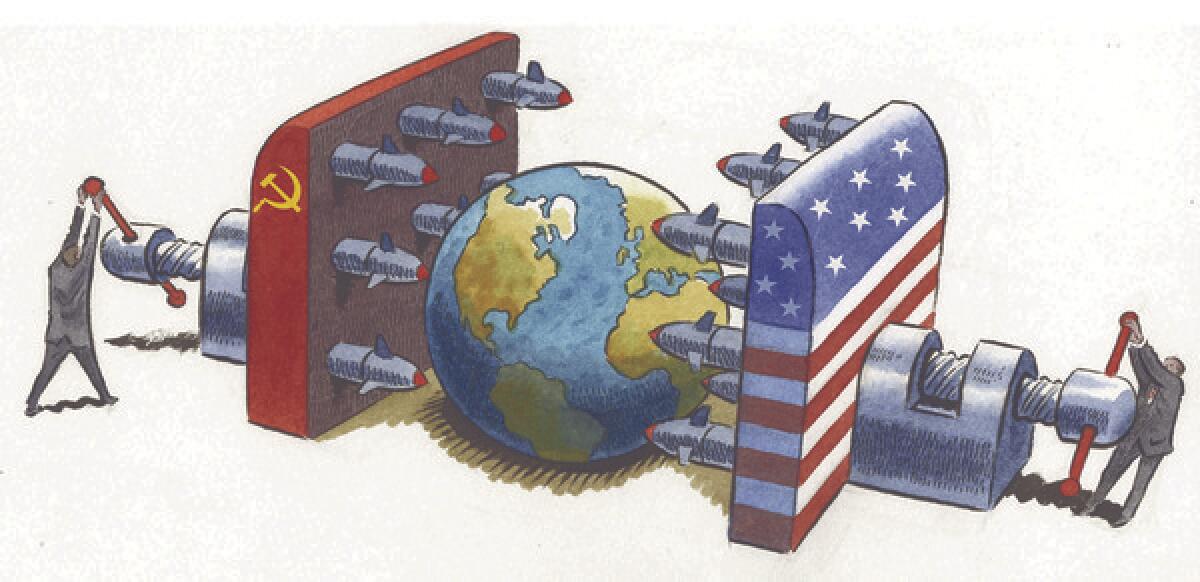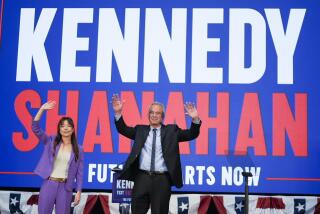The ’13 days in October,’ 50 years later

In 2007, when President George W. Bush’s White House spokesperson, Dana Perino, was asked a question about one of the biggest foreign policy crises in American history, she drew a blank. “I was panicked a bit because I really don’t know about … the Cuban missile crisis,” she later told NPR. “It had to do with Cuba and missiles, I’m pretty sure.”
Perino was 35 in 2007, and thus had been born about a decade after the famous “13 days in October” 1962 when President John F. Kennedy confronted Soviet leader Nikita Khrushchev over Moscow’s installation of missiles in Cuba. The history books describe it as the closest the world has come to nuclear war.
Perino’s ignorance revealed a striking shift in conservative perception. At the time of the Cuban missile crisis, Republicans expected that it would be remembered for generations as a moment when a Democratic president squandered a historic opportunity. Barry Goldwater, Ronald Reagan and William F. Buckley all suggested at the time that Kennedy’s handling of the crisis represented a capitulation to the Soviets; that the president had bowed to Soviet threats when he promised not to invade Cuba. They believed Kennedy’s actions had guaranteed that a communist outpost would remain, 90 miles from our shores, and that the president should have taken the opportunity to liberate the Cubans from their communist overlords.
These days, most conservatives wouldn’t make such arguments. Even the Reagan Library in Simi Valley gave no hint of the views Reagan once held on the matter in a Cold War exhibit it had up until a few months ago. There was a single panel of text about those 13 days in October, and it informed visitors: “Kennedy took decisive action. His firm stand, based on excellent intelligence and analyses, resolved the Cuban missile crisis.”
But at the time, it wasn’t just Reagan, Goldwater and Buckley who favored U.S. intervention; inside the circle of Kennedy’s advisors, advocates of an attack on Cuba were led by Gen. Curtis LeMay, chief of the Air Force, who proposed bombing 1,000 sites in Cuba, to be followed seven days later by a ground invasion by U.S. troops. (LeMay had risen in power in World War II for devising and carrying out the strategy of fire-bombing Japanese cities, which killed more civilians than the atomic bombs.)
How would LeMay’s Cuba plan have worked? The Soviets might have retaliated as the first bombers approached Cuba. Even if Khrushchev did not order the firing of missiles, a Soviet commander in charge of a missile base in Cuba could have ordered a launch. They had eight of their big missiles fueled, targeted and armed with nuclear warheads that October — missiles that could have reached Manhattan. If all eight R-12s in Cuba had been launched, the total payload would have been eight megatons — “an explosive force equivalent to all the bombs ever dropped in the history of war,” according to one account of the crisis. If only a single R-12 missile reached a U.S. city, it would have hit with 1 megaton of explosive force — about 80 times more powerful than the Hiroshima bomb. Even if the targeting were off, the city probably would have been destroyed.
But the Soviets might not have attacked cities on the East Coast; they might have retaliated by launching their short-range tactical nuclear missiles at the U.S. base at Guantanamo Bay, Cuba, which could have killed all the Americans there. Then Kennedy would have had to retaliate — by attacking a military base or a major city in the Soviet Union.
For the last 30 years, historians have largely ignored the conservative critiques of the time. Kennedy’s actions have been challenged instead from the left, by those who question whether the missile crisis was necessary. The Kennedy advocates have held that the successful resolution of the crisis demonstrated his mastery of world politics, showing how he struck the perfect balance between steely determination and strategic flexibility. As a result, they say, he prevented nuclear war while removing the threat posed by the missiles in Cuba.
His critics have argued for the last three decades that Kennedy’s taking the nation to the brink of nuclear war was an irresponsible and unnecessary risk, and that the crisis should have been resolved by less dangerous methods involving normal diplomacy and negotiation. The Soviet missiles in Cuba, they note, did not represent an increased threat to the U.S. — “a missile is a missile,” Kennedy himself said, and it didn’t matter whether it was coming from Siberia or Cuba. The missiles in Cuba did nothing to change the strategic balance of power — that’s what Secretary of Defense Robert McNamara told Kennedy at the beginning of the crisis: “I don’t think there is a military problem.” And the U.S. already had missiles based in Turkey, closer to the Soviet Union than the missiles in Cuba were to the U.S., so we had set the precedent for moving missiles up to our enemy’s border.
The Cuban missile crisis exhibit at the JFK museum in Boston, of course, celebrates Kennedy’s steely resolve and tactical flexibility, and pretty much ignores his critics on the left and right. But by focusing on the 13 days in October, it fails to explain the big picture, the larger context. It avoids asking a big question, an obvious question: Why did Khrushchev move missiles to Cuba in the first place?
The answer is not hard to find: The U.S. had sponsored an invasion of Cuba by CIA-trained Cuban exiles at the Bay of Pigs just two years earlier, attempting to overthrow Fidel Castro by force. The threat that the U.S. might invade again was what motivated Khrushchev, and especially Castro; they wanted a bargaining chip to trade for a U.S. agreement not to invade. And they got that agreement from Kennedy.
That raises the question of winners and losers. The conventional wisdom these days is that Kennedy was the big winner, Castro the big loser. Kennedy’s prestige soared while Castro was humiliated and shown to be irrelevant, even to his Soviet overlords. But the conventional wisdom doesn’t survive scrutiny. The next year, Kennedy was assassinated by a pro-Castro activist, and shortly after that, Khrushchev was deposed by hard-liners opposed to his loss of face. Meanwhile, 50 years later, Castro is still there.
The conservatives, who argued at the time that Kennedy’s no-attack pledge guaranteed the survival of Castro’s regime, turned out to be right — about that, at least.
Jon Wiener is a professor of history at UC Irvine and the author, most recently, of “How We Forgot the Cold War: A Historical Journey Across America.”
More to Read
A cure for the common opinion
Get thought-provoking perspectives with our weekly newsletter.
You may occasionally receive promotional content from the Los Angeles Times.










